Description
CLARUS 700 from ZEISS enables doctors to detect even the smallest changes during the disease. In addition to true-color fundus images, the system also captures high-resolution fundus autofluorescence (FAF) images in FAF blue and FAF green, infrared images (IR), and external images. The ultra-high resolution of the CLARUS 700, combined with our intuitive review software, enables clinicians to track changes confidently.
CLARUS 700 was only with the introduction of the new technology for ultra-wide-angle imaging of the retina that it was shown that many diseases often begin covertly in the outermost periphery of the retina or can only be found there.
Clarus 700 from Zeiss, the latest multimodal ultra-wide-angle imaging of the fundus of the eye, offers you color-accurate image analyses in high resolution with an accuracy of up to 7.3 µm.
The laser scanning technology creates an ultra-wide field of view of more than 200 degrees, and the device also contains angiography/autofluorescence modules for special questions. Clarus 700 makes unique, non-contact images of the retina.
OUTSTANDING DETAIL – EVEN THE SMALLEST SIGNS OF RETINAL DISEASE BECOME VISIBLE
ZEISS CLARUS 700 captures detailed and precise retina images from the macula to the periphery. It can also detect subtle signs of disease that are difficult to see directly or on low-resolution fundus images. The ZEISS optics capture ultra-wide-angle images with a high resolution of up to 7 microns.
CLARUS 700 from ZEISS is the next-generation system for FAG and ICG Ultra Wide Field in HD, which is used to conduct comprehensive background examinations, diagnosis, treatment planning, and disease management.
CLARUS 700 features a comprehensive fundus autofluorescence (FAF) system that allows clinicians to visualize the fluorescence emitted by lipofuscin in the retinal pigment epithelium (RPE). This type of acquisition is an indicator of the health of the pigment epithelium.
Two autofluorescences are available for evaluating macular pigment: FAF-green and FAF-blue.
CLARUS 700 is a simple, stable, and intuitive system: it ensures image integrity thanks to a comfortable experience for the patient.
The infrared (IR) preview allows the acquisition of images without eyelids and eyelashes, requiring fewer re-acquisitions.
Unsurpassed image quality thanks to fluorescein angiography
CLARUS® 700 from ZEISS enables you to capture sharp, precise images from the macula to the far periphery, all with a single instrument that combines:
- Ultra-large field of view
- True color images thanks to wide spectrum LED scans
- Exceptional image resolution
- Fluorescein angiography
- Advanced image capture features
ZEISS CLARUS 700 is a truly comprehensive imaging system developed for ophthalmology specialists to
help provide state-of-the-art patient care.
A true advance in the treatment of diseases
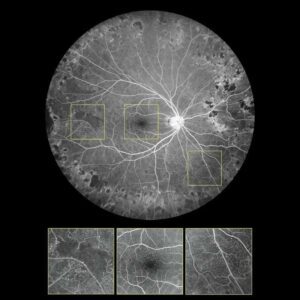
By allowing you to view the far periphery (and across multiple imaging modalities), the ZEISS CLARUS 700 can document signs of eye disease that occur in different eye regions and present differently, depending on the imaging modality…
Proliferative diabetic retinopathy
Early-stage fluorescein angiogram: Visualize macular ischemia, capillary nonperfusion, and intraretinal microvascular abnormalities in excellent detail with high-resolution imaging.
High-resolution FA
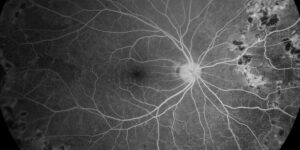
Ultra-widefield fluorescein angiography is a useful exam to identify diabetic retinopathy, primarily visualizing the peripheral retina, which is fundamental to assessing nonperfused areas, vascular leakage, microvascular abnormalities, and neovascularizations. With the ZEISS CLARUS 700 ultra-widefield imaging and high-resolution FA, the smallest details from ONH to the periphery can be captured in the early phase.
A glimpse into the future of disease management with ZEISS Imaging Spotlight
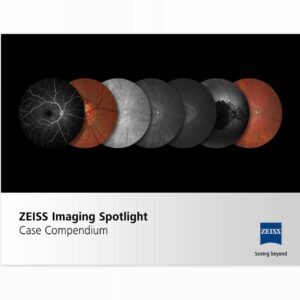
The ZEISS Imaging Spotlight features unique and challenging fundus imaging cases offering diagnostic insights into various pathologies. The selected case will be published in Ophthalmology Management, both print and online, and part of the ZEISS Case Compendium every month.
We integrated the Diagnostic Imaging platform from ZEISS. Get a view of the whole.

Capturing, integrating, and transforming high-quality data into meaningful analysis that improves practice workflow and patient care is essential to meeting today’s challenges in eye care.
ZEISS Integrated Diagnostic Imaging (IDI) combines exam data from gold-standard devices such as CLARUS ultra-
widefield fundus imaging and CIRRUS™ HDOCT and presents critical information from multiple sources integrated under a single point of view to make more efficient and accurate decisions
about treatments.
Unsurpassed Color and clarity
CLARUS 700 from ZEISS was designed as a comprehensive ultra-widefield retinal camera for eye care specialists to capture ultra-widefield images in true Color, with unsurpassed image quality and a complete suite of modalities, including fluorescein angiography.
CLARUS 700 is the first and only fundus camera that can do everything to its Advantage:
- The ultra-wide field lets you capture sharp, precise images from the macula to the far periphery.
- True Color Imaging – With Broad Line technology, the ZEISS CLARUS 700 captures images with coloration very close to that seen during a clinical exam.
- Image resolution: allows visualizing all the details in high resolution from the posterior pole to the periphery.
- Fluorescein angiography.
- Chin rest: so that the lens moves, not the patient, for alignment.
This innovative retinal camera can be used with the Cirrus HD-OCT, allowing the data provided by these devices to be combined. This is possible thanks to the ZEISS Integrated Diagnostic Imaging platform.
As an ophthalmologist, I can tell you that the ZEISS Clarus 700 Ultra-widefield Fundus Imaging system is a potent tool that has revolutionized how we diagnose and manage various ocular conditions.
The ZEISS Clarus 700 is a high-resolution imaging system that can capture ultra-widefield images of the retina and other ocular structures with exceptional clarity and detail. This allows us to more accurately diagnose and monitor conditions such as age-related macular degeneration, diabetic retinopathy, and retinal vascular occlusions.
The system is also incredibly versatile, with various imaging modalities and capture modes allowing us to tailor the imaging process to each patient’s needs. Its advanced software and processing capabilities further enhance the quality and detail of the captured images, making it easier for us to detect and track even the smallest changes in the retina and other structures.
In conclusion, the ZEISS Clarus 700 Ultra-widefield Fundus Imaging system is an indispensable tool for ophthalmologists who want to provide the best possible care for their patients. Its advanced imaging capabilities and versatility make it an excellent choice for diagnosing, managing, and monitoring various ocular conditions.

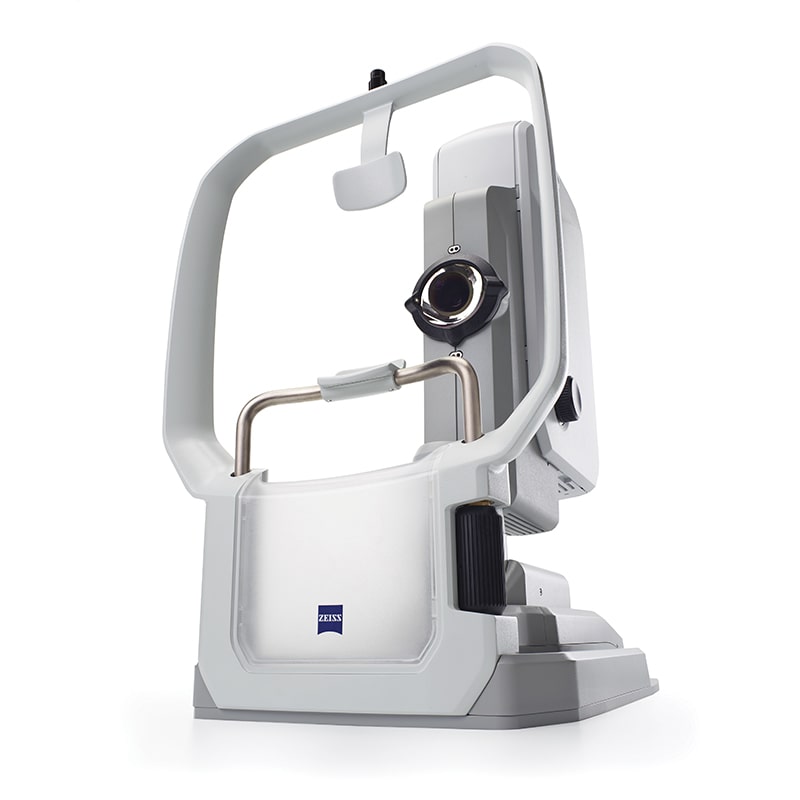


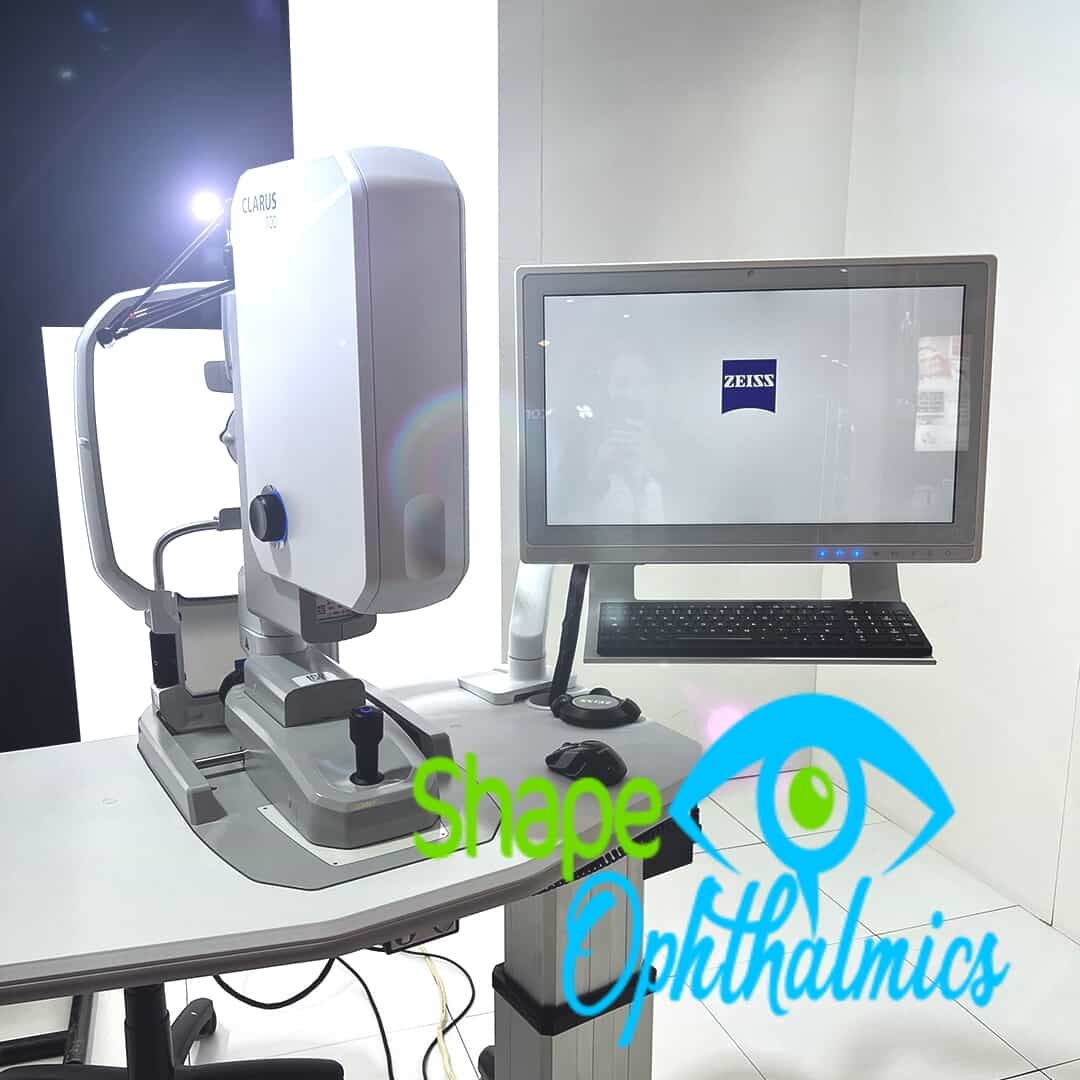

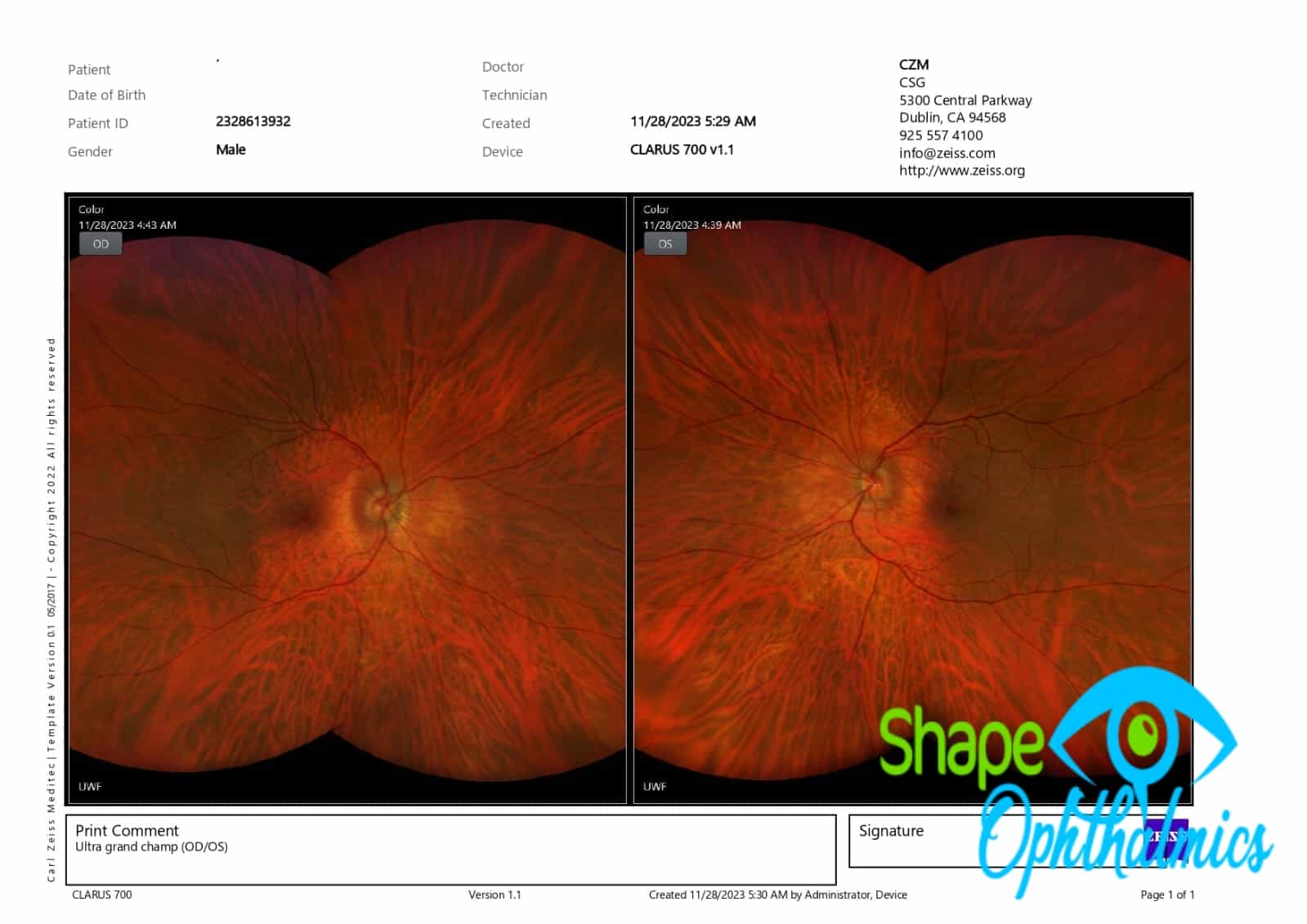
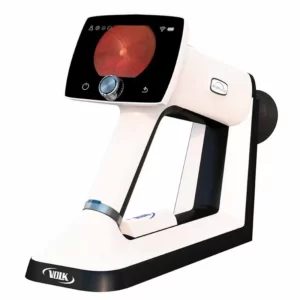
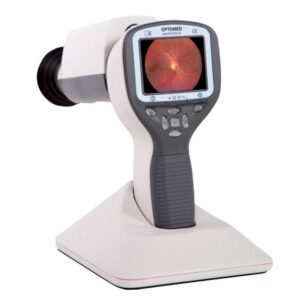
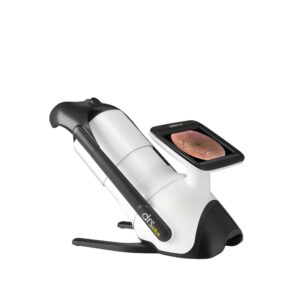
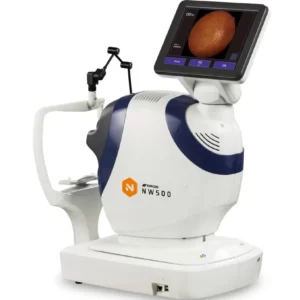
Reviews
There are no reviews yet.